[English] 日本語
 Yorodumi
Yorodumi- PDB-1my7: NF-kappaB p65 subunit dimerization domain homodimer N202R mutation -
+ Open data
Open data
- Basic information
Basic information
| Entry | Database: PDB / ID: 1my7 | ||||||
|---|---|---|---|---|---|---|---|
| Title | NF-kappaB p65 subunit dimerization domain homodimer N202R mutation | ||||||
 Components Components | NF-kappaB p65 (RelA) subunit | ||||||
 Keywords Keywords |  TRANSCRIPTION / TRANSCRIPTION /  Immunoglobulin / Ig / Immunoglobulin / Ig /  beta-sandwich / beta-sandwich /  beta-sheet / homodimerDNA-binding / beta-sheet / homodimerDNA-binding /  Transcription regulation / Activator / Transcription regulation / Activator /  Nuclear protein / Nuclear protein /  Phosphorylation Phosphorylation | ||||||
| Function / homology |  Function and homology information Function and homology informationSUMOylation of immune response proteins / Regulated proteolysis of p75NTR / Interleukin-1 processing / DEx/H-box helicases activate type I IFN and inflammatory cytokines production / RIP-mediated NFkB activation via ZBP1 / TRAF6 mediated NF-kB activation / NF-kB is activated and signals survival / PKMTs methylate histone lysines / Activation of NF-kappaB in B cells / TAK1-dependent IKK and NF-kappa-B activation ...SUMOylation of immune response proteins / Regulated proteolysis of p75NTR / Interleukin-1 processing / DEx/H-box helicases activate type I IFN and inflammatory cytokines production / RIP-mediated NFkB activation via ZBP1 / TRAF6 mediated NF-kB activation / NF-kB is activated and signals survival / PKMTs methylate histone lysines / Activation of NF-kappaB in B cells / TAK1-dependent IKK and NF-kappa-B activation / FCERI mediated NF-kB activation / positive regulation of chondrocyte differentiation / CLEC7A (Dectin-1) signaling / Interleukin-1 signaling / acetaldehyde metabolic process / Downstream TCR signaling / prolactin signaling pathway / NF-kappaB p50/p65 complex / positive regulation of Schwann cell differentiation / CD209 (DC-SIGN) signaling / cellular response to peptidoglycan /  ankyrin repeat binding / negative regulation of protein sumoylation / postsynapse to nucleus signaling pathway / defense response to tumor cell / nucleotide-binding oligomerization domain containing 2 signaling pathway / cellular response to interleukin-6 / ankyrin repeat binding / negative regulation of protein sumoylation / postsynapse to nucleus signaling pathway / defense response to tumor cell / nucleotide-binding oligomerization domain containing 2 signaling pathway / cellular response to interleukin-6 /  actinin binding / negative regulation of non-canonical NF-kappaB signal transduction / actinin binding / negative regulation of non-canonical NF-kappaB signal transduction /  NF-kappaB complex / cellular response to angiotensin / response to UV-B / vascular endothelial growth factor signaling pathway / interleukin-1-mediated signaling pathway / positive regulation of leukocyte adhesion to vascular endothelial cell / positive regulation of miRNA metabolic process / toll-like receptor 4 signaling pathway / cellular response to hepatocyte growth factor stimulus / positive regulation of amyloid-beta formation / positive regulation of T cell receptor signaling pathway / response to cobalamin / NF-kappaB complex / cellular response to angiotensin / response to UV-B / vascular endothelial growth factor signaling pathway / interleukin-1-mediated signaling pathway / positive regulation of leukocyte adhesion to vascular endothelial cell / positive regulation of miRNA metabolic process / toll-like receptor 4 signaling pathway / cellular response to hepatocyte growth factor stimulus / positive regulation of amyloid-beta formation / positive regulation of T cell receptor signaling pathway / response to cobalamin /  phosphate ion binding / non-canonical NF-kappaB signal transduction / cellular response to lipoteichoic acid / response to muramyl dipeptide / general transcription initiation factor binding / phosphate ion binding / non-canonical NF-kappaB signal transduction / cellular response to lipoteichoic acid / response to muramyl dipeptide / general transcription initiation factor binding /  NF-kappaB binding / hair follicle development / neuropeptide signaling pathway / positive regulation of vascular endothelial growth factor production / RNA polymerase II core promoter sequence-specific DNA binding / canonical NF-kappaB signal transduction / response to amino acid / cellular response to interleukin-1 / negative regulation of insulin receptor signaling pathway / response to cAMP / tumor necrosis factor-mediated signaling pathway / response to muscle stretch / positive regulation of interleukin-12 production / response to interleukin-1 / negative regulation of angiogenesis / negative regulation of miRNA transcription / liver development / response to progesterone / response to organic substance / positive regulation of interleukin-1 beta production / response to cytokine / response to ischemia / positive regulation of interleukin-8 production / negative regulation of extrinsic apoptotic signaling pathway / response to bacterium / NF-kappaB binding / hair follicle development / neuropeptide signaling pathway / positive regulation of vascular endothelial growth factor production / RNA polymerase II core promoter sequence-specific DNA binding / canonical NF-kappaB signal transduction / response to amino acid / cellular response to interleukin-1 / negative regulation of insulin receptor signaling pathway / response to cAMP / tumor necrosis factor-mediated signaling pathway / response to muscle stretch / positive regulation of interleukin-12 production / response to interleukin-1 / negative regulation of angiogenesis / negative regulation of miRNA transcription / liver development / response to progesterone / response to organic substance / positive regulation of interleukin-1 beta production / response to cytokine / response to ischemia / positive regulation of interleukin-8 production / negative regulation of extrinsic apoptotic signaling pathway / response to bacterium /  peptide binding / RNA polymerase II transcription regulatory region sequence-specific DNA binding / animal organ morphogenesis / protein catabolic process / response to insulin / defense response / peptide binding / RNA polymerase II transcription regulatory region sequence-specific DNA binding / animal organ morphogenesis / protein catabolic process / response to insulin / defense response /  transcription coactivator binding / negative regulation of protein catabolic process / chromatin DNA binding / cellular response to hydrogen peroxide / DNA-binding transcription repressor activity, RNA polymerase II-specific / positive regulation of miRNA transcription / cytokine-mediated signaling pathway / positive regulation of interleukin-6 production / positive regulation of non-canonical NF-kappaB signal transduction / cellular response to nicotine / transcription coactivator binding / negative regulation of protein catabolic process / chromatin DNA binding / cellular response to hydrogen peroxide / DNA-binding transcription repressor activity, RNA polymerase II-specific / positive regulation of miRNA transcription / cytokine-mediated signaling pathway / positive regulation of interleukin-6 production / positive regulation of non-canonical NF-kappaB signal transduction / cellular response to nicotine /  histone deacetylase binding / cellular response to tumor necrosis factor / chromatin organization / positive regulation of NF-kappaB transcription factor activity / histone deacetylase binding / cellular response to tumor necrosis factor / chromatin organization / positive regulation of NF-kappaB transcription factor activity /  regulation of inflammatory response / regulation of inflammatory response /  double-stranded DNA binding / DNA-binding transcription activator activity, RNA polymerase II-specific / positive regulation of canonical NF-kappaB signal transduction / DNA-binding transcription factor binding / cellular response to lipopolysaccharide / double-stranded DNA binding / DNA-binding transcription activator activity, RNA polymerase II-specific / positive regulation of canonical NF-kappaB signal transduction / DNA-binding transcription factor binding / cellular response to lipopolysaccharide /  transcription regulator complex / sequence-specific DNA binding / transcription cis-regulatory region binding transcription regulator complex / sequence-specific DNA binding / transcription cis-regulatory region bindingSimilarity search - Function | ||||||
| Biological species |   Mus musculus (house mouse) Mus musculus (house mouse) | ||||||
| Method |  X-RAY DIFFRACTION / X-RAY DIFFRACTION /  SYNCHROTRON / SYNCHROTRON /  MOLECULAR REPLACEMENT / Resolution: 1.49 Å MOLECULAR REPLACEMENT / Resolution: 1.49 Å | ||||||
 Authors Authors | Huxford, T. / Mishler, D. / Phelps, C.B. / Huang, D.-B. / Sengchanthalangsy, L.L. / Reeves, R. / Hughes, C.A. / Komives, E.A. / Ghosh, G. | ||||||
 Citation Citation |  Journal: J.Mol.Biol. / Year: 2002 Journal: J.Mol.Biol. / Year: 2002Title: Solvent exposed non-contacting amino acids play a critical role in NF-kappaB/IkappaB alpha complex formation Authors: Huxford, T. / Mishler, D. / Phelps, C.B. / Huang, D.-B. / Sengchanthalangsy, L.L. / Reeves, R. / Hughes, C.A. / Komives, E.A. / Ghosh, G. | ||||||
| History |
|
- Structure visualization
Structure visualization
| Structure viewer | Molecule:  Molmil Molmil Jmol/JSmol Jmol/JSmol |
|---|
- Downloads & links
Downloads & links
- Download
Download
| PDBx/mmCIF format |  1my7.cif.gz 1my7.cif.gz | 59.6 KB | Display |  PDBx/mmCIF format PDBx/mmCIF format |
|---|---|---|---|---|
| PDB format |  pdb1my7.ent.gz pdb1my7.ent.gz | 43.9 KB | Display |  PDB format PDB format |
| PDBx/mmJSON format |  1my7.json.gz 1my7.json.gz | Tree view |  PDBx/mmJSON format PDBx/mmJSON format | |
| Others |  Other downloads Other downloads |
-Validation report
| Arichive directory |  https://data.pdbj.org/pub/pdb/validation_reports/my/1my7 https://data.pdbj.org/pub/pdb/validation_reports/my/1my7 ftp://data.pdbj.org/pub/pdb/validation_reports/my/1my7 ftp://data.pdbj.org/pub/pdb/validation_reports/my/1my7 | HTTPS FTP |
|---|
-Related structure data
| Related structure data | 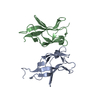 1my5C 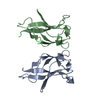 1bftS S: Starting model for refinement C: citing same article ( |
|---|---|
| Similar structure data |
- Links
Links
- Assembly
Assembly
| Deposited unit | 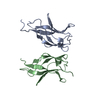
| ||||||||||||
|---|---|---|---|---|---|---|---|---|---|---|---|---|---|
| 1 |
| ||||||||||||
| Unit cell |
| ||||||||||||
| Components on special symmetry positions |
|
- Components
Components
| #1: Protein | Mass: 13244.971 Da / Num. of mol.: 2 / Fragment: residues 191 - 304 (dimerization domain) / Mutation: N202R Source method: isolated from a genetically manipulated source Source: (gene. exp.)   Mus musculus (house mouse) / Gene: RELA / Plasmid: pET11a / Species (production host): Escherichia coli / Production host: Mus musculus (house mouse) / Gene: RELA / Plasmid: pET11a / Species (production host): Escherichia coli / Production host:   Escherichia coli BL21(DE3) (bacteria) / Strain (production host): BL21(DE3) / References: UniProt: Q04207 Escherichia coli BL21(DE3) (bacteria) / Strain (production host): BL21(DE3) / References: UniProt: Q04207#2: Water | ChemComp-HOH / |  Water Water |
|---|
-Experimental details
-Experiment
| Experiment | Method:  X-RAY DIFFRACTION / Number of used crystals: 1 X-RAY DIFFRACTION / Number of used crystals: 1 |
|---|
- Sample preparation
Sample preparation
| Crystal | Density Matthews: 2.16 Å3/Da / Density % sol: 42.96 % | ||||||||||||||||||||||||||||||
|---|---|---|---|---|---|---|---|---|---|---|---|---|---|---|---|---|---|---|---|---|---|---|---|---|---|---|---|---|---|---|---|
Crystal grow | Temperature: 291 K / Method: vapor diffusion, hanging drop / pH: 7.5 Details: 0.l M sodium HEPES, 0.2 M sodium tartrate, 2 M ammonium sulfate, pH 7.5, VAPOR DIFFUSION, HANGING DROP, temperature 291K | ||||||||||||||||||||||||||||||
| Crystal grow | *PLUS Temperature: 18 ℃ / Method: vapor diffusion | ||||||||||||||||||||||||||||||
| Components of the solutions | *PLUS
|
-Data collection
| Diffraction | Mean temperature: 100 K |
|---|---|
| Diffraction source | Source:  SYNCHROTRON / Site: SYNCHROTRON / Site:  APS APS  / Beamline: 19-ID / Wavelength: 1 Å / Beamline: 19-ID / Wavelength: 1 Å |
| Detector | Type: SBC-2 / Detector: CCD / Date: Nov 25, 2001 |
| Radiation | Protocol: SINGLE WAVELENGTH / Monochromatic (M) / Laue (L): M / Scattering type: x-ray |
| Radiation wavelength | Wavelength : 1 Å / Relative weight: 1 : 1 Å / Relative weight: 1 |
| Reflection | Resolution: 1.49→30 Å / Num. all: 39447 / Num. obs: 36240 / % possible obs: 91.8 % / Observed criterion σ(F): 2.5 / Observed criterion σ(I): 2.5 / Redundancy: 10.2 % / Rsym value: 0.054 / Net I/σ(I): 13.9 |
| Reflection shell | Resolution: 1.49→1.54 Å / Mean I/σ(I) obs: 2.5 / Rsym value: 0.327 / % possible all: 82.7 |
| Reflection | *PLUS Num. measured all: 368554 / Rmerge(I) obs: 0.054 |
| Reflection shell | *PLUS % possible obs: 82.7 % / Rmerge(I) obs: 0.327 |
- Processing
Processing
| Software |
| |||||||||||||||||||||||||
|---|---|---|---|---|---|---|---|---|---|---|---|---|---|---|---|---|---|---|---|---|---|---|---|---|---|---|
| Refinement | Method to determine structure : :  MOLECULAR REPLACEMENT MOLECULAR REPLACEMENTStarting model: pdb id 1bft Resolution: 1.49→30 Å / Cross valid method: THROUGHOUT / σ(F): 2 / Stereochemistry target values: Engh & Huber
| |||||||||||||||||||||||||
| Refinement step | Cycle: LAST / Resolution: 1.49→30 Å
| |||||||||||||||||||||||||
| Refine LS restraints |
| |||||||||||||||||||||||||
| Refinement | *PLUS Lowest resolution: 20 Å | |||||||||||||||||||||||||
| Solvent computation | *PLUS | |||||||||||||||||||||||||
| Displacement parameters | *PLUS | |||||||||||||||||||||||||
| Refine LS restraints | *PLUS
|
 Movie
Movie Controller
Controller



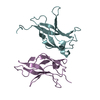

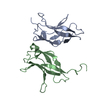
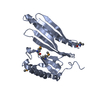
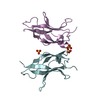

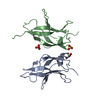
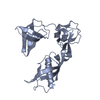
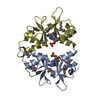
 PDBj
PDBj












